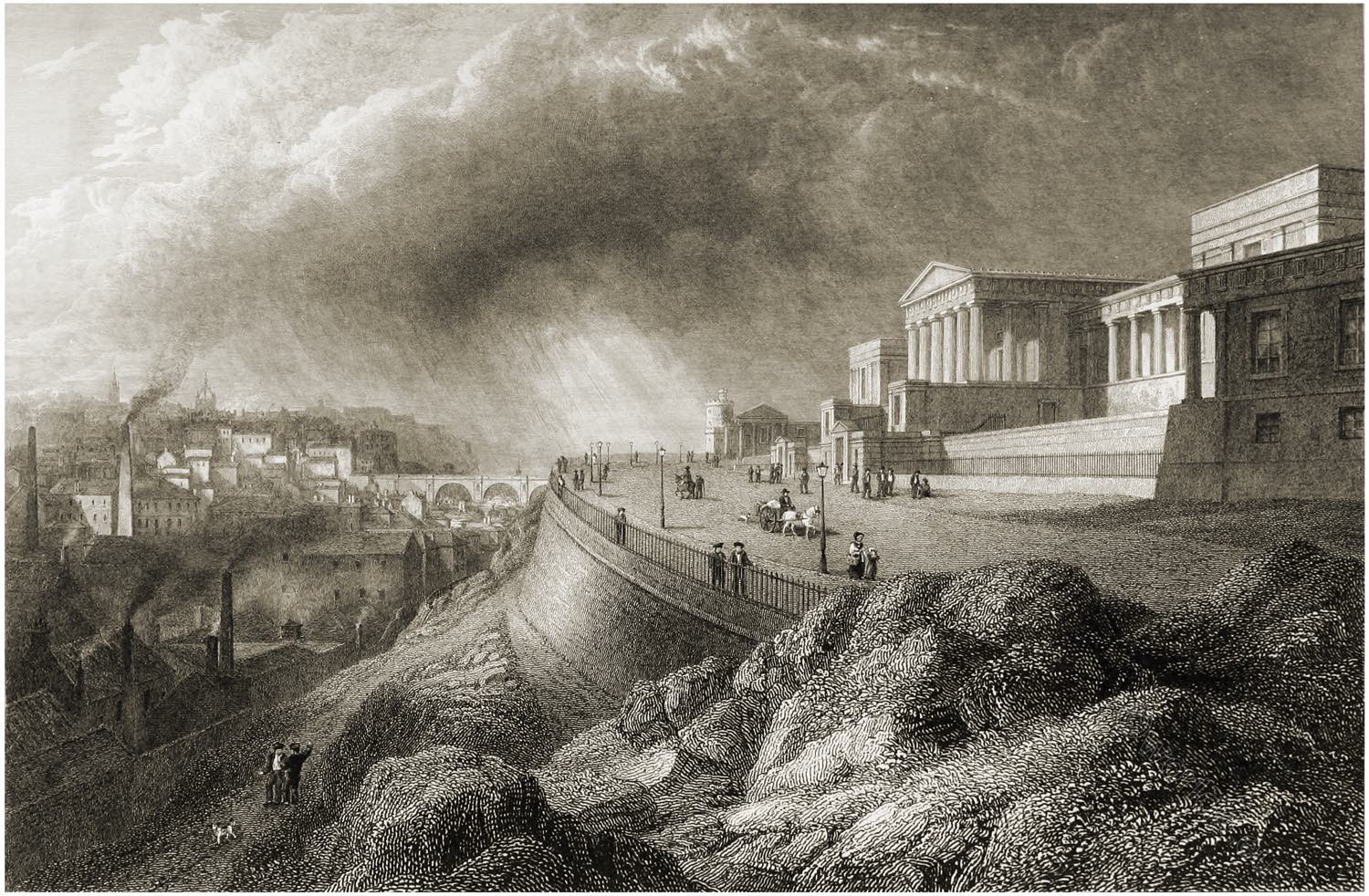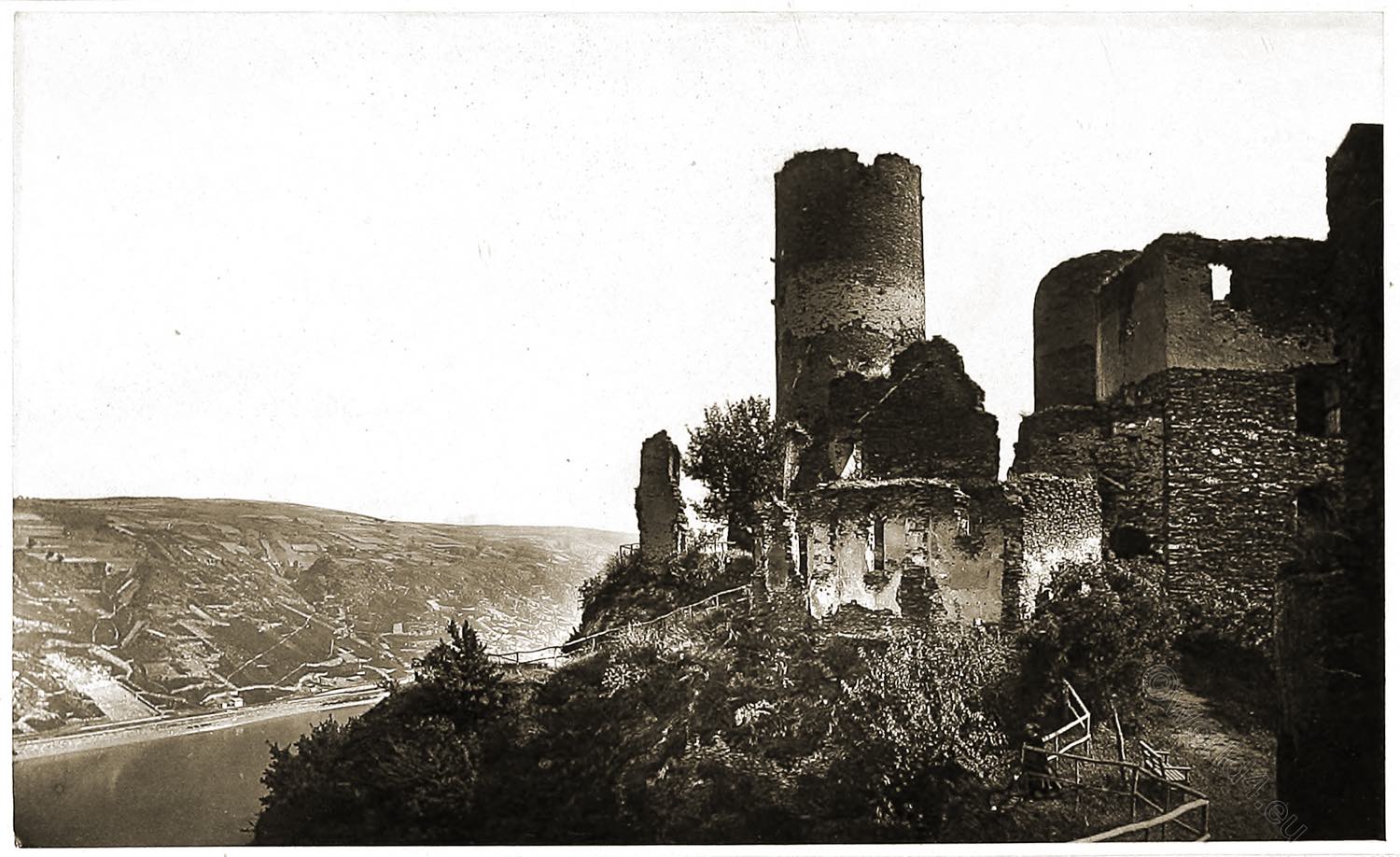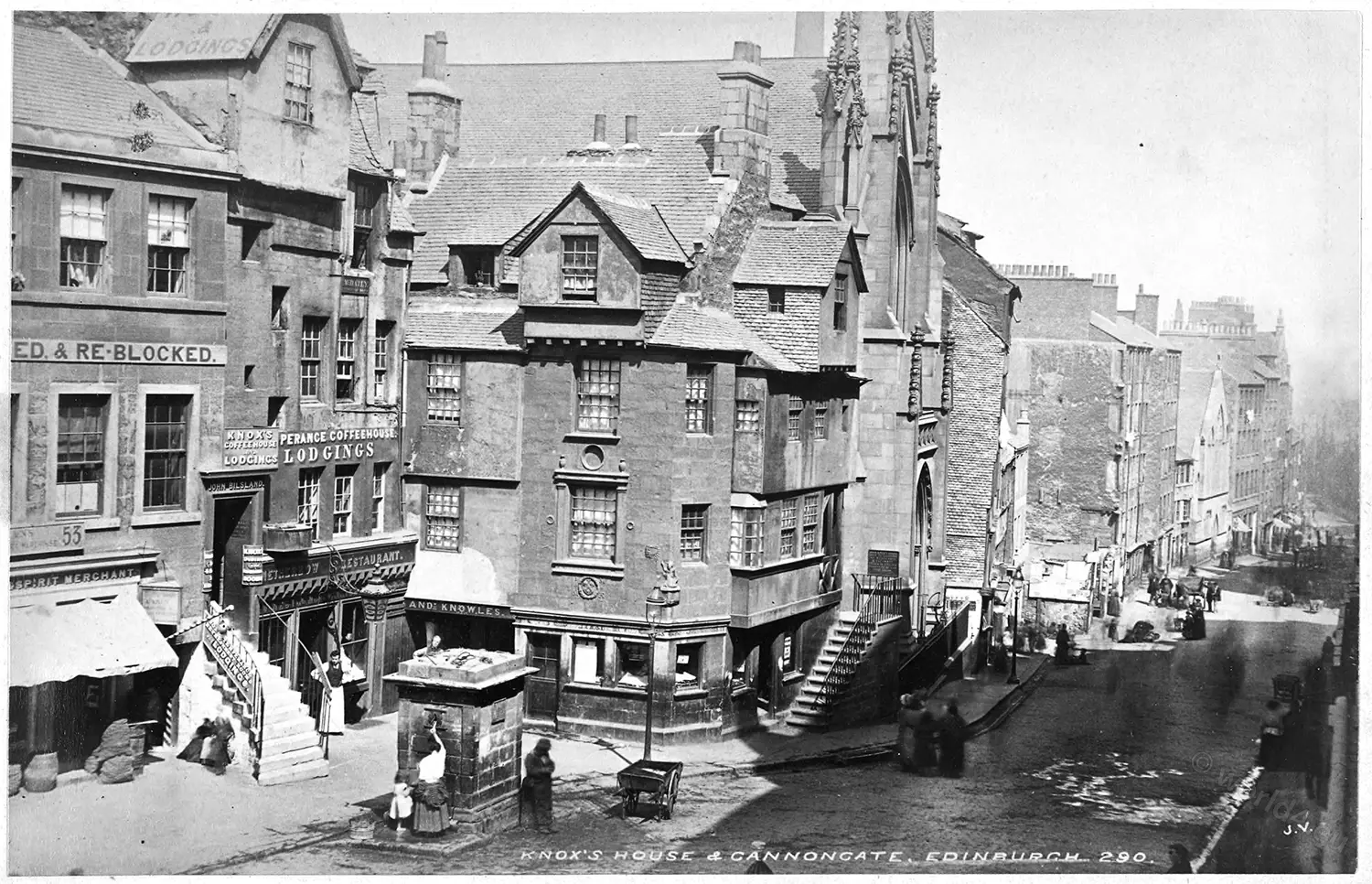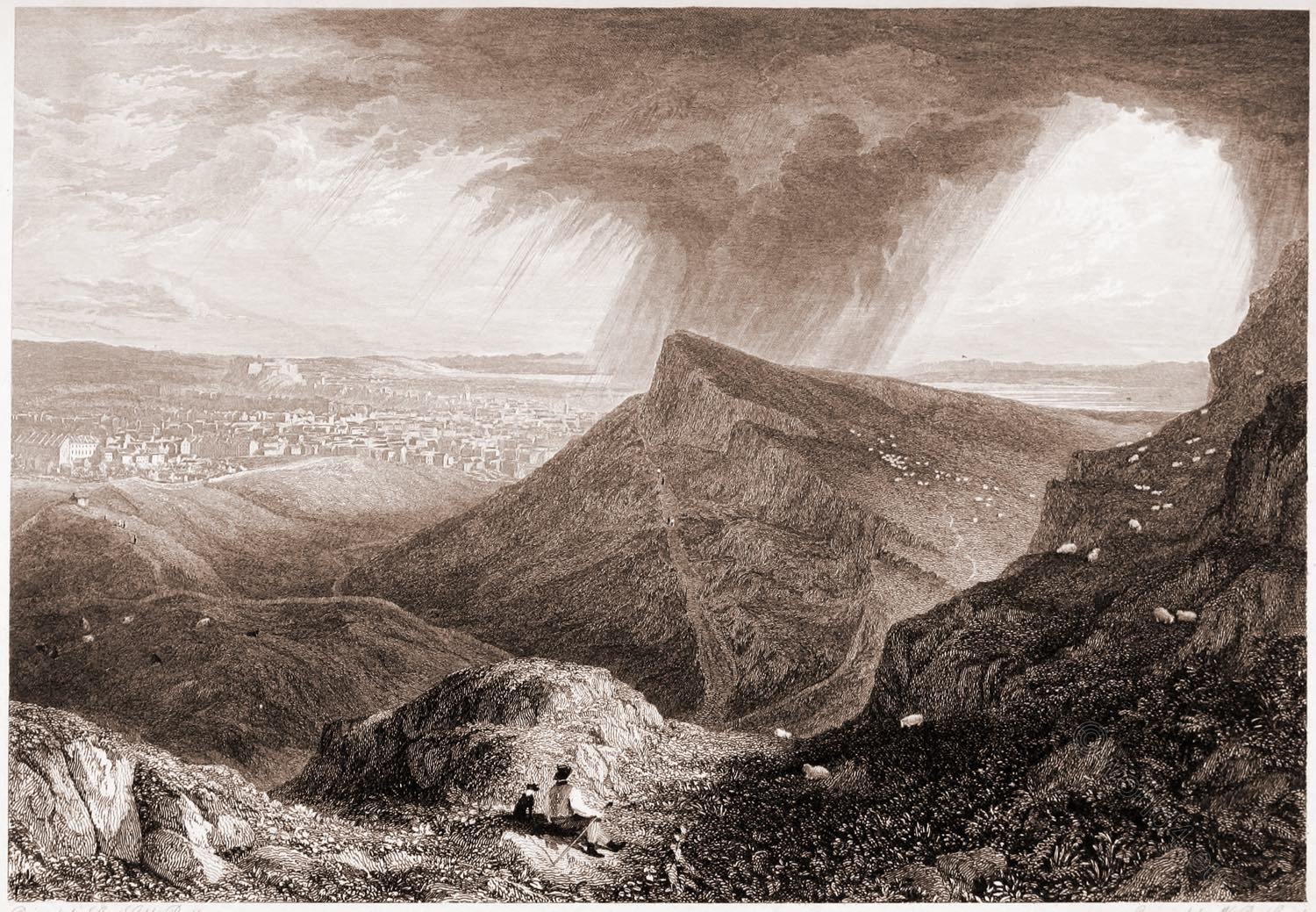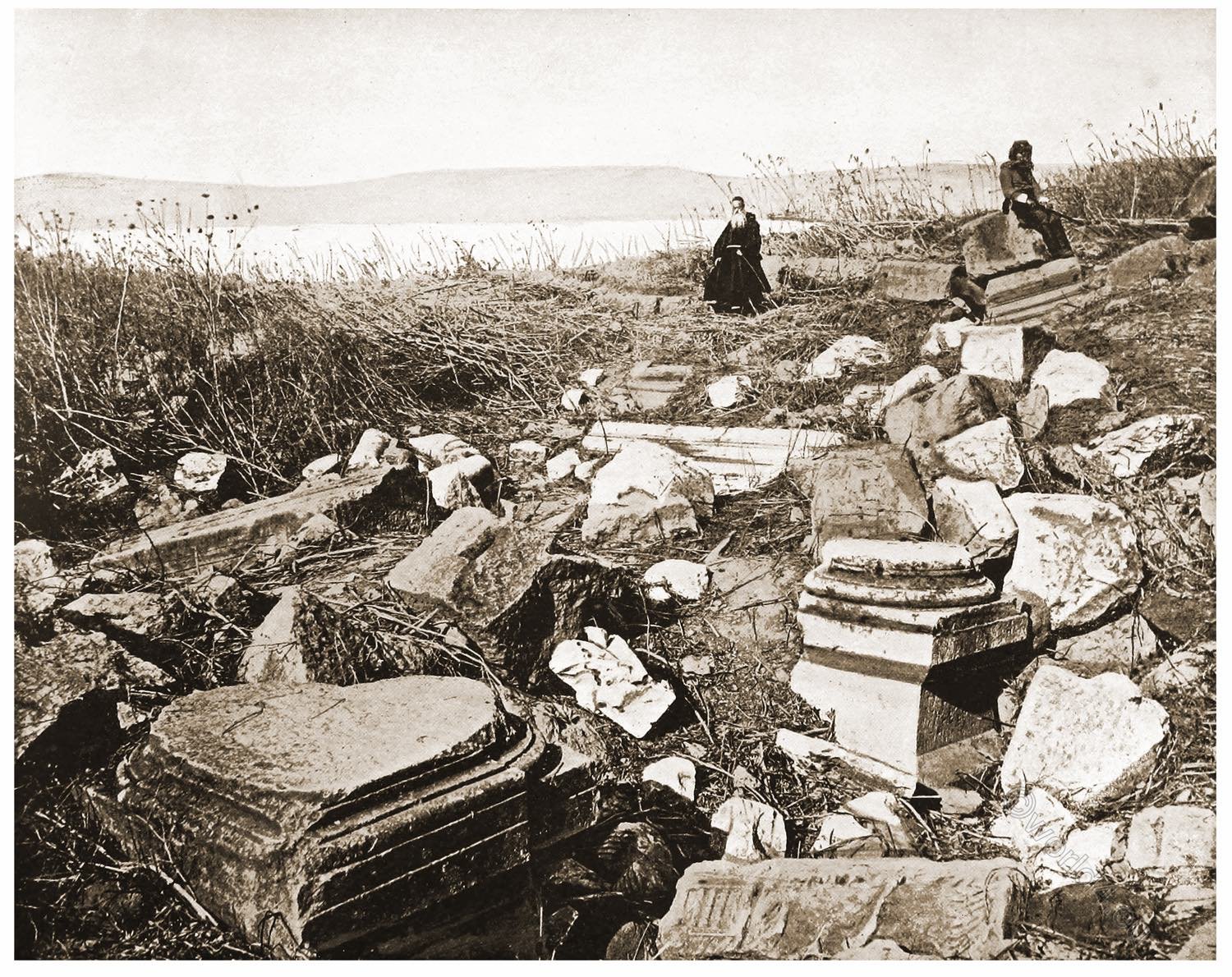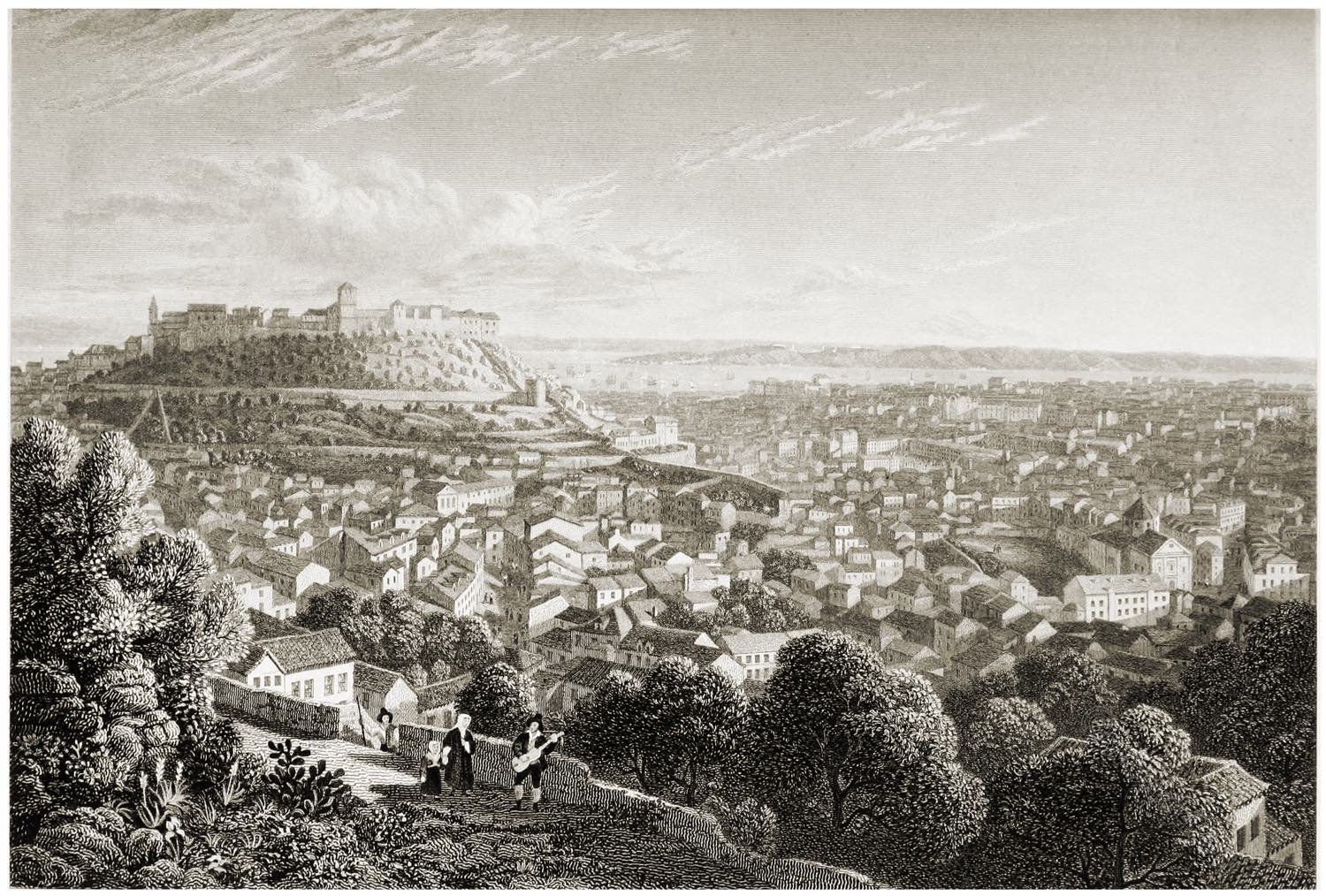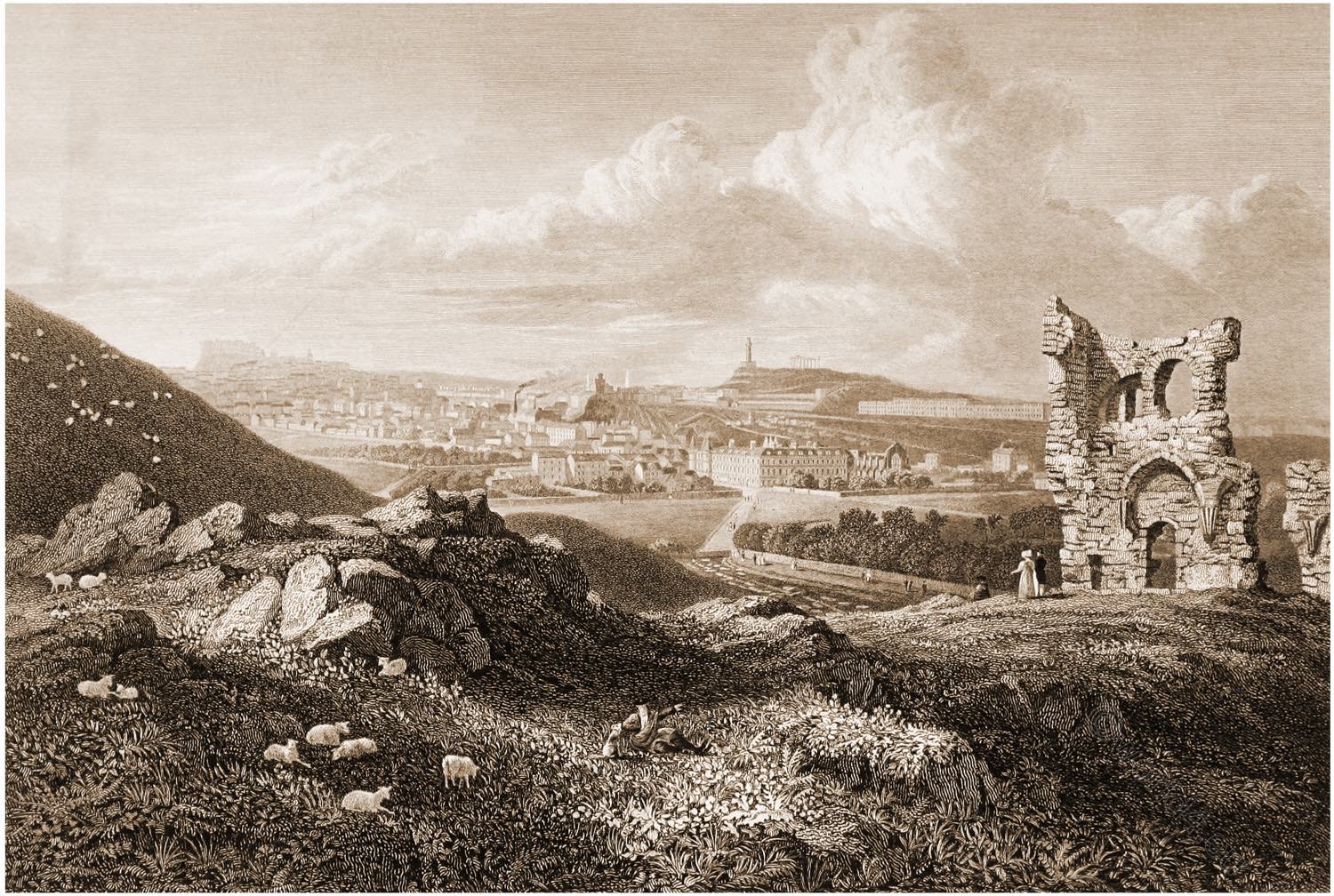
EDINBURGH, FROM ST. ANTHONY’S CHAPEL
The name of St. Anthony’s Chapel has been rendered familiar to every reader, in the incomparable tales by the Author of Waverley. Its situation too, together with the character of the surrounding scenery, has been so beautifully and faithfully described, that a recurrence to them will afford the best explanation of the foreground and middle distance of the scene before us.
The view of Edinburgh from this point will give a correct idea of the relative situations of the Castle and Calton Hills, at opposite extremities of the city. The Castle, with the Cathedral of St. Giles, and the spire of the Tron Church, are the prominent features in the Old City on the left.
St. George’s Church; part of Princes Street; the new buildings on the North Bridge; St. Andrew’s Church and Lord Melville’s Monument, occupy the centre. The Calton Hill surmounted by Nelson’s Pillar, and the National Monument, are on the right. Just beneath Nelson’s Monument we distinguish the new High School, and farther to the right are the new buildings of Regent Terrace. Nearly in the centre of the scene stands Holyrood Palace and its adjoining Chapel; between it and the foreground are the fields called St. Ann’s Yards. The Duke’s Walk is seen just below the ruins of St. Anthony’s Chapel.
Source: Select views of some of the principal cities of Europe by Robert Batty. London: Moon, Boys, and Graves, 1832.
Continuing
EDINBURGH.
The Castle, from the Grass Market.
Edinburgh, from the Calton Hill.
The Calton Hill, Nelson’s Monument.
Edinburgh, from St. Anthony’s Chapel.
Edinburgh, from the ascent to Arthur’s Seat.
Discover more from World4 Costume Culture History
Subscribe to get the latest posts sent to your email.

